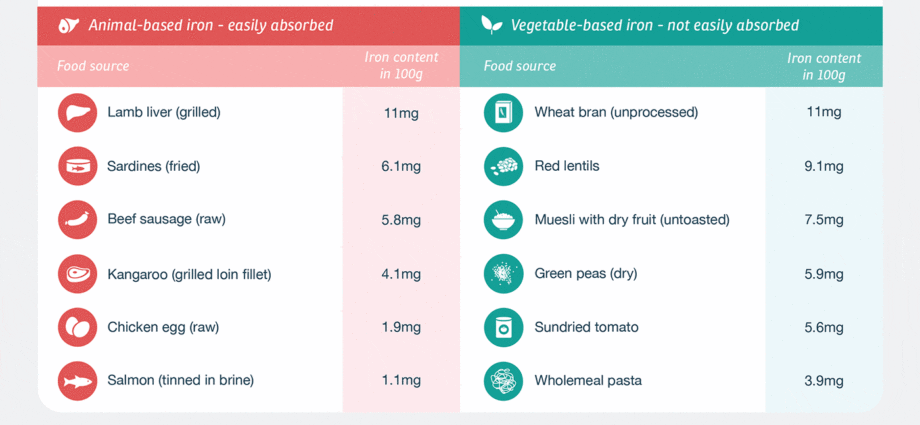Another issue plaguing plant-based aficionados (and opponents) is iron. Can a person following a strict plant-based diet get enough of this important mineral and from what sources? To cover this issue in detail, I decided to write a short article.
The answer is simple: you don’t need to worry about iron as long as you are healthy and stick to varied a vegetarian or vegan diet.
If you think your body’s iron stores may be lowered for some reason, iron absorption can be improved by:
– add sources of vitamin C to the diet;
– avoid tea and coffee while eating;
– increase the consumption of legumes (beans, lentils, peas).
If your concerns persist, see your doctor and have your iron levels checked. When it is low, your doctor may suggest iron supplements or dietary adjustments.
Symptoms of Iron Deficiency
Symptoms of iron deficiency can include fatigue, increased heart rate and heart rate, increased breathing during exercise, and increased production of lactic acid.
Symptoms of anemia include pale skin, brittle nails, koilonychia (spoon-shaped nails with raised outer edges), weakness, loss of appetite, lethargy, hair loss, impaired immunity, angular stomatitis (irritation and cracking at the corners of the lips), glossitis (inflammation of the tongue) , chronic gastritis, as well as perverted appetite, impaired thermoregulation and delayed psychomotor development in children.
Absorption of iron from plant sources
The table below provides examples of some plant sources of iron:Source: www.supertracker.usda.gov
Vitamin C is a powerful enhancer of iron absorption and is able to overcome the inhibitors found in plant foods that interfere with the absorption of the mineral. These inhibitors include phytates and tannin.
One study found that varying doses of phytates (phytic acid, a component of some plants) reduced iron absorption by 10-50%. But adding 50 milligrams of vitamin C counteracts phytates, and 150 milligrams of this vitamin increases iron absorption by nearly 30%.
Similarly, in the presence of a large dose of tannin (tannic acid found in many plants), 100 milligrams of vitamin C increases iron absorption by 2–8%.
The amino acid L-lysine plays a role in the absorption of iron and zinc. Among plant foods, legumes (beans, lentils, peas) and quinoa are rich in L-lysine, and vegans who do not consume a lot of legumes may be deficient in lysine.
For some women, iron supplementation does not increase stores of this trace mineral. In one study in these women, iron supplementation with the amino acid L-lysine (1,5–2 grams per day for 6 months) caused an increase in iron stores.
Iron consumption rates
The Food and Nutrition Board (FNB) suggests that vegan diets absorb 10% iron, compared to 18% in the regular diet, and that vegans may have as much as 5% iron absorption. The FNB does not set a specific intake for vegetarians, but emphasizes that “the need for iron in vegetarians is 1,8 times higher.”
The FNB is a division of the US National Academy of Sciences founded by Congress in 1863 to advise the federal government on science and technology. The FNB oversees the development and updating of dietary nutrient intake (DRI) guidelines, which include Recommended Dietary Intakes (RDA) and Adequate Intake (AI), as well as other standards for human nutrition. Postal address: Food and Nutrition Board, Institute of Medicine, 2101 Constitution Ave., NW, Washington, DC 20418.
The FNB provides the following general guidelines:
The upper limit for iron intake is set to prevent gastrointestinal upset and not to prevent possible chronic illness due to iron overdose. For those who experience regular intense physical activity, this dosage should be increased by 30%.










